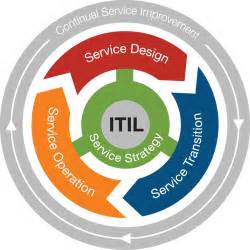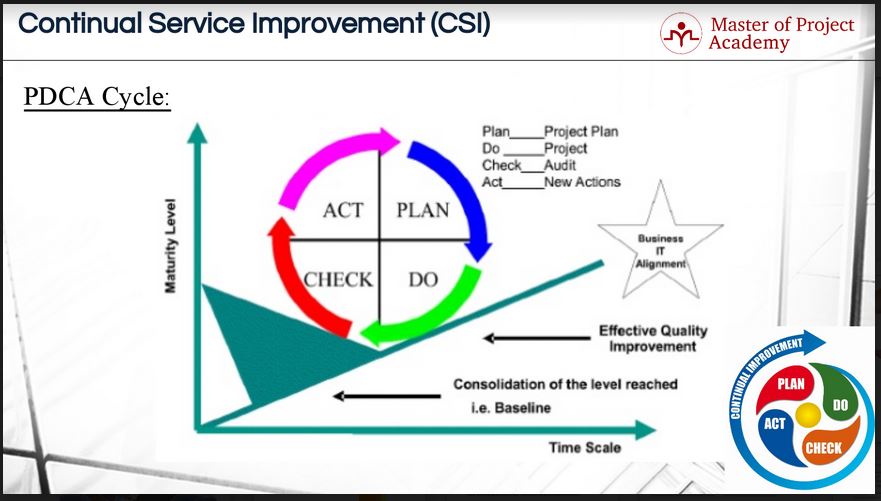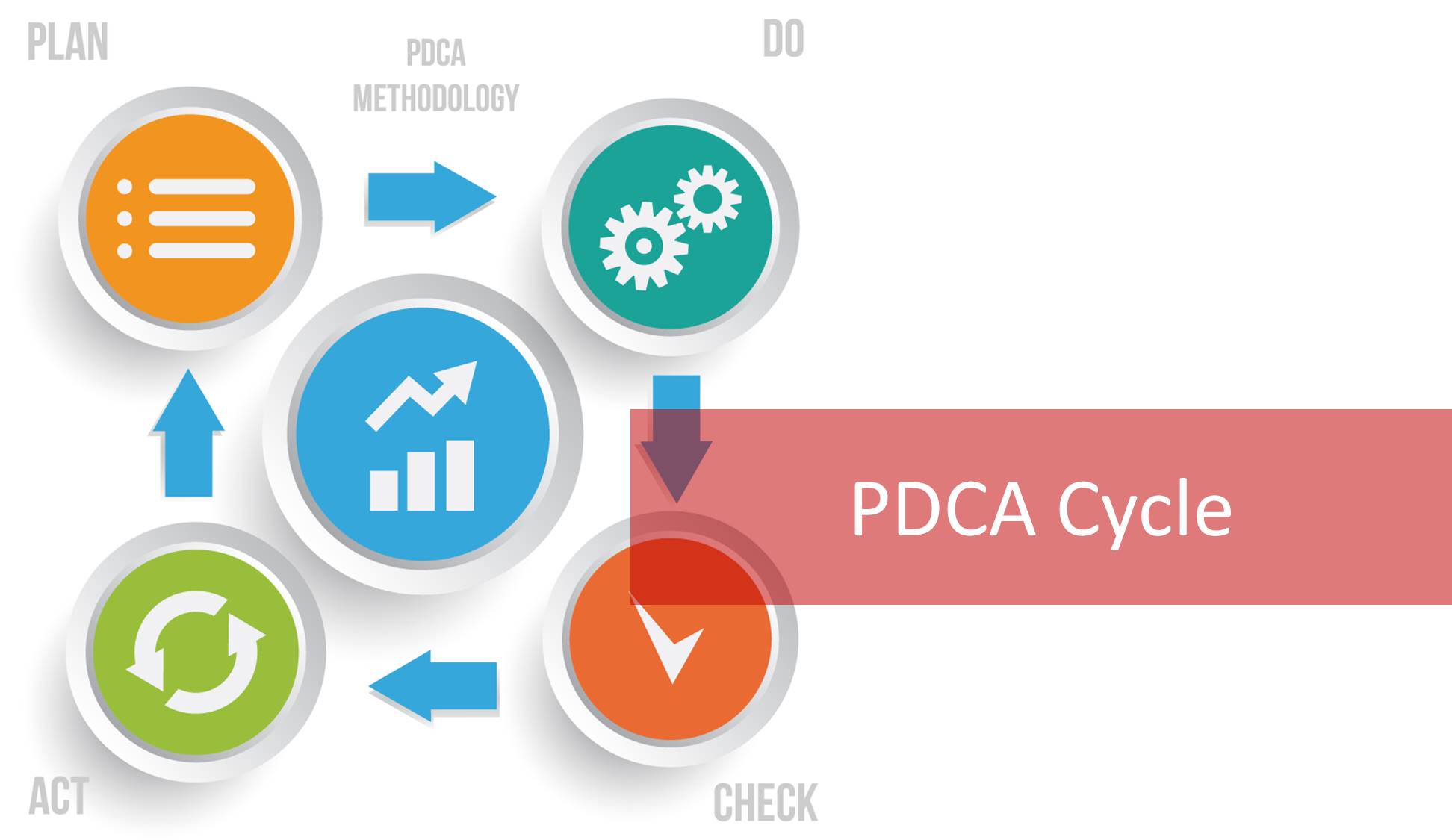Continual service improvement is an important stage of the ITIL Lifecycle for services as found in ITIL certification exam questions. This stage encompasses all the other stages: Service Strategy, Service Design, Service Transition and Service Operation. In all these stages, there will be something that can be improved upon. Therefore, continual service improvement looks at all these stages to identify gaps or points of pain that can be improved. As with all the other stages in the ITIL Service Lifecycle, continual service improvement has specific processes to follow. These processes are discussed in ITIL foundation certification training. The most important of these processes is the PDCA cycle which guides the service owner through effective continual service improvement.
The PDCA Cycle
This cycle is a management approach developed by Edwards Deming and results in improved quality, increased productivity, and results in a more competitive position. This cycle is also known as the Deming cycle. This cycle is used in many industries and areas in business for controlling and measuring results and then acting based on the results to produce a better output in later steps or trials.
The basis of the PDCA cycle is a four-part quality lifecycle. And these actually constitute the Acronym of the PDCA cycle: Plan, Do, Check and Act. This cycle may be used to improve, for example, an online ordering service or the Service Level Management process within an organization.
The 4 Activities of the PDCA Cycle
Plan
The first step of the PDCA cycle is planning the improvements. In this step, measures for success are agreed. Gap analysis is undertaken and a plan is produced to close the gap through a series of step improvements.
Do
The second activity of the PDCA cycle will be Do which refers to the implementation of improvements. A project is initiated and conducted to implement any steps needed to close the gaps identified in the Plan phase. The project may include a number of step changes to improve a service or process.
Check
The third activity of the PDCA cycle is Check. Check is more accurately described as Monitoring, Measuring and Reviewing. The results of the implemented improvements are compared with the measures for success identified and signed off in the Plan phase.
Act
The fourth and the last activity of the PDCA cycle is Act. Improvements are implemented in this step. The improvements that have been identified are fully implemented. The PDCA cycle can be used in order to improve any of the ITIL Service Management processes.
The PDCA cycle and the ITIL Service Lifecycle
This cycle can be used in order to improve any of the Service Management processes. An ongoing and continual improvement is a fundamental tenet of ITIL CSI. So this PDCA cycle and looking for improvement areas in every process of each ITIL service lifecycle is a repetitive process in the continual service improvement stage. This improvement is aimed to be reached in all four phases of the ITIL Service Lifecycle which are: Service Strategy, Service Design, Service Transition and Service Operation.

The continual improvement part of continual service improvement stage takes place on “check” and “act” activities of the PDCA cycle because in first two activities, plan and do, the improvement areas are identified and which steps will be applied are determined and implemented. Then the check and act steps monitor and control the outputs of the implemented actions.
The PDCA cycle visualized
This figure visualizes how PDCA cycle helps to align the business with the IT. As you see the graph has two dimensions. The vertical axis shows the maturity level and the horizontal axis shows the time scale. There is a barrier under the PDCA cycle and this is called the consolidation of the level reached i.e. the baseline. So, this point in time refers to the baseline where the first measurements started.

After the baseline and benchmarks are determined, the next target to reach is defined. And this point is referred as the effective quality improvement in the figure. From the baseline to the target, the PDCA cycle is processed. And with this cycle, improvement areas are identified, plans are generated, and implemented. Then, the results are checked and measurements are compared to the baseline levels. If the targets are not met, new action plans are prepared again. If the targets are met, then a new higher target is aimed to reach. And this is the cycle of the continual service improvement in an IT organization.
As the PDCA wheel turns and climbs to a maturity level over time, the alignment between business and IT becomes better as well. There is a hint to help understand each activity of PDCA cycle better in this figure. The plan is referred to as Project plan because, at this step, gaps are analyzed and improvement points are determined and actions that will be followed are defined. Do is referred to as Project because, at this step, the plan generated in the first step is executed to improve and reach the targets. The check is referred to as Audit because, at this step, outputs after implemented actions are measured and the results are compared to baseline or previous measurements. And finally, Act is referred to as New Actions because, at this step, if the implemented actions could not succeed in reaching the targets, new actions are taken.
Conclusion
The PDCA cycle clearly illustrates what the continual service improvement stage of the ITIL lifecycle looks like. No improvement can be done without proper planning and there is no use in making improvements if their results will not be measured and compared to baseline. Finally, continual service improvement, as the name suggests, is a continual process that repeats itself over and over until a service is either perfect of redundant. No service is ever perfect and there will always be room for more improvements so The PDCA cycle never stops during the lifecycle of a service.
Review by: Rachel Mendoza


3 thoughts on “PDCA Cycle: The 4 Gears of Continual Service Improvement”
Comments are closed.